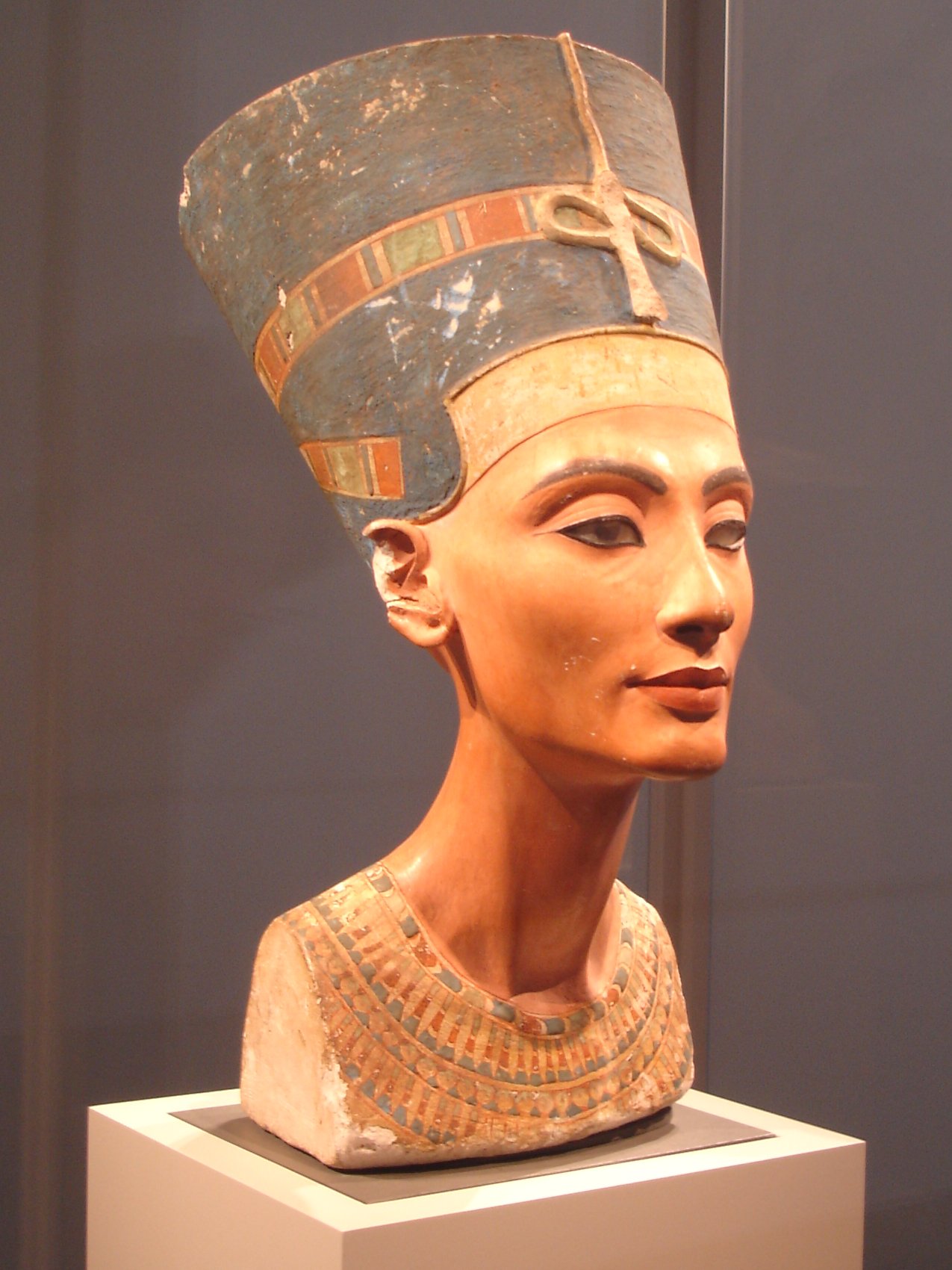I'm taking some classes on Art History this semester and this piece of art mesmerizes me. Imagine being Thutmose in 1345 B.C.E tasked with creating a likeness of the Queen who is for all intents and purposes a living god at the time. While this is most probably not what Nefertiti looked like this still has huge artistic value. This is an unbelievably stylized version of the her. If you look at these angles you can see just how Thutmose uses everything to extenuate the beauty of the face. He uses the headdress to create this graceful cone shape leading down to her chin. It is physically impossible for a human to have some of her qualities like the nearly perfect line from the front of the headdress to the tip of the nose. If we move onto the face: the high cheek bones, the full lips, the defined jaw line. Then we move down to the really long neck, and the bit of the shoulders that are visible. While from the side the neck looks a little odd if you look straight on it helps to define the jaw even more. From a more artistic standpoint the neck and shoulder adds a sort of asymmetrical balance to the piece as a whole. To me the very idea that a dude in 1345 B.C.E. could capture something in a bust that about 3000 years later would still find unbelievably beautiful. It's inspired me to eventually visit the Neues Museum in Berlin.


Great post, thank you for sharing.To me the very idea that a dude in 1345 B.C.E. could capture something in a bust that we more than 3000 years later would still find unbelievably beautiful. It's inspired me to eventually visit the Neues Museum in Berlin.
It makes you wonder if there is something intrinsic in what we commonly find appealing/attractive? Symmetry is often pointed to as a key indicator of attractiveness. This certainly has that.